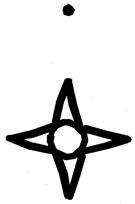Anthropology, Department of

Nebraska Anthropologist
Date of this Version
2013
Document Type
Article
Citation
Nebraska Anthropologist 2013
Abstract
Adoption is a rather peculiar phenomenon of human society which is almost exclusive to our species, at least so far in how prolific it is. Adoption always involves some altruistic behavior at least initially (Silk 1987:40), and in our modern society it would certainly seem to be just that. Adoption of course is not simply an invention of modern times or western culture though as some may think, but exists crossculturally; in an HRAF search of 258 cultures 162 cultures are shown to have some form of adoption. The prevalence of adoption has led many anthropologists to attempt to explain how it could have developed from an evolutionary perspective, a pursuit many would consider folly. Much of the attention anthropologists have devoted to studying this phenomenon has been directed to the cultures of the Oceania island nations, where adoption is common, and so much of the current theories on adoption are based on the forms of adoption that exist there, which has been explained by anthropologist like Joan Silk as an adaptive mechanism used to improve one's own inclusive fitness. In her iheory she gives that the reasons and expectations for adoption being among others; 1.) Family labor balancing, 2.) Adjustment of family and composition, and 3.) Replacement of a lost child, or a solution for infertility. I have used the Resources available through the eHRAF to perform a cross-cultural comparison of Silk's theories and predictions on adoption with other cultures in different parts of the world in order to see if Silk's Kin selection in adoption theory can hold up as a general theory for human adoption cross culturally.


Comments
Copyright 2013